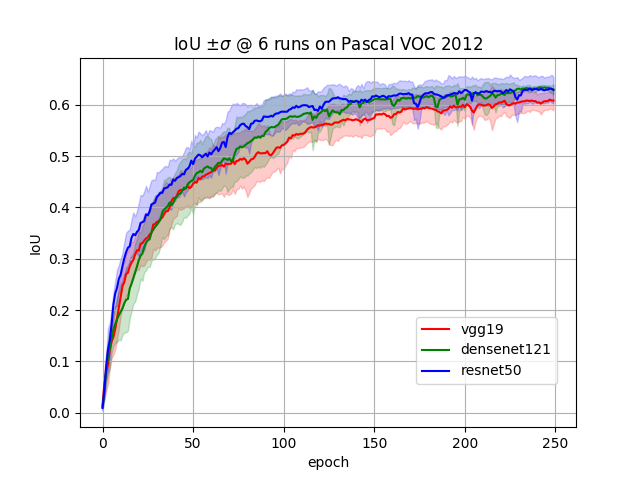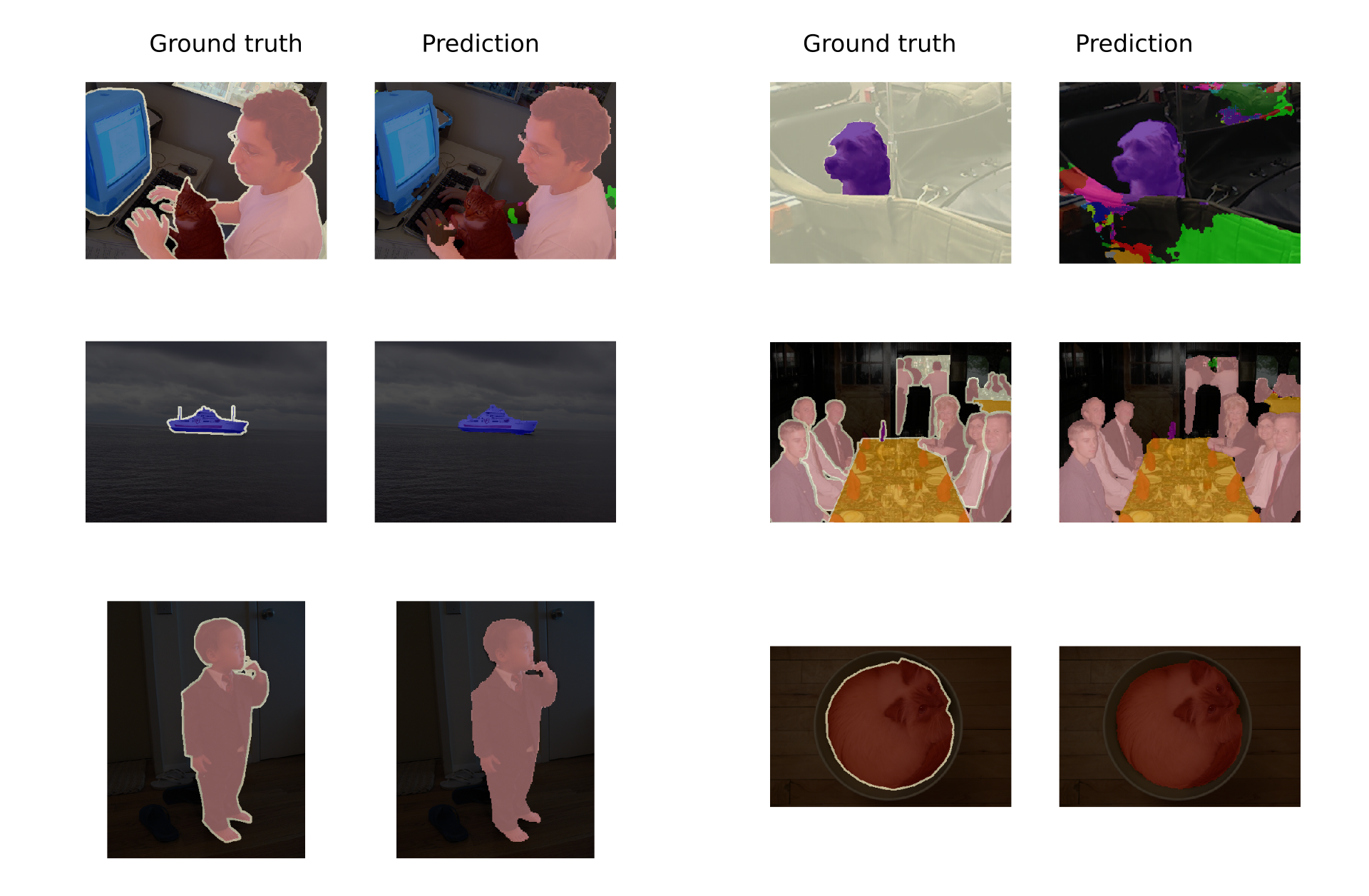U-Nets for image segmentation with pre-trained backbones in PyTorch.
I was looking for an U-Net PyTorch implementation that can use pre-trained torchvision models as backbones in the encoder path. There is a great repo for this in Keras, but I didn't find a good PyTorch implementation that works with multiple torchvision models. So I decided to create one.
So far VGG, ResNet and DenseNet backbones have been implemented.
Installing package:
git clone https://github.com/mkisantal/backboned-unet.git
cd backboned-unet
pip install .
The U-net model can be imported just like any other torchvision model. The user can specify a backbone architecture, choose upsampling operation (transposed convolution or bilinear upsampling followed by convolution), specify the number of filters in the different decoder stages, etc.
from backboned_unet import Unet
net = Unet(backbone_name='densenet121', classes=21)
The module loads the backbone torchvision model, and builds a decoder on top of it using specified internal features of the backbone.
The figure below illustrates the training results for U-Nets with different ImageNet pretrained backbones.
Setup:
network = Unet(backbone_name=model_name, classes=21, decoder_filters=(512, 256, 128, 64, 32)
criterion = torch.nn.CrossEntropyLoss(ignore_index=255)
optimizer = torch.optim.Adam([{'params': network.get_pretrained_parameters(), 'lr':1e-5},
{'params': network.get_random_initialized_parameters()}], lr=1e-4)
Images were resized to 224x224. Batch size 32. No dataset augmentation. IoU is calculated with the background ignored.
Example segmentation results:

